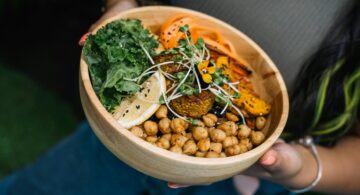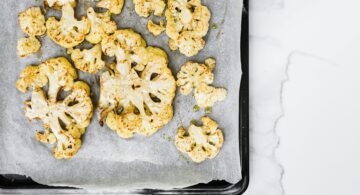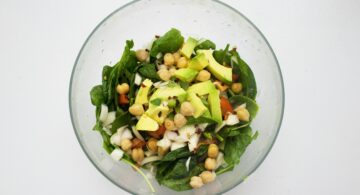How Your Diet Affects Your Pearly Whites
“Oh the shark has…pretty teeth dear…and he shows them…pearly white.”
–Mac the Knife, Bobby Darin/Frank Sinatra
Amazing how the shark – with his carnivorous diet – manages to keep those – “pearly whites.” Ole sharky don’t even brush or floss none!
Well, in this month’s issue of Home Cures That Work, we go deep (get it? Deep…shark…ocean…*sigh* sorry) to uncover the foods that rule and the ones that ruin your precious smile.
And because your teeth don’t get replaced like ole sharky, hold on to your Oral-B because I have some shocking good stuff to share with you today…
Certain foods damage your teeth by lowering the pH levels in your mouth and saliva
Potential hydrogen – pH – is an important part of your dental health, which is something few of us think about when having morning OJ, or coffee.
Acidic foods and beverages like citrus fruits and juices, sodas, starches, legumes and sugars all have a negative impact on your teeth. The acid from these foods attacks your enamel and eats away at the phosphorous – the second most important mineral in your teeth and bones, next to calcium.[1]
In a moment we’re going to:
- Examine low pH foods and beverages to stay away from
- Review the foods that contain phosphorous that raise pH to help protect your teeth, gums and jawbone
But first, does the amount of food you eat at one sitting have an impact on your teeth?
Let’s start with the Journal of Oral Sciences…
Here’s something that may never have occurred to you when piling up the vittles.
According to the European Journal of Oral Sciences [2], it’s not only what you eat, it’s also the quantity of food you eat that determines the longevity of your smile.
You’ll see why in a moment.
Just don’t assume those 2-story stacks of premium pastrami cuts on rye guarantee your choppers and grinders that use-it-or-lose-it, life-long nibble-ability.
Now it’s true that certain foods produce more saliva than others – case in point: that mouthwatering pastrami sandwich. And saliva is very good for your gums and teeth because of the digestive enzymes. It helps wash away any food left behind after swallowing, too. In all its enzymatic, slimy glory – it even helps retard tooth decay and gum disease!The rye bread tells the salivary gland (parotid gland) to secrete an enzyme called amylase to break down that starch, but if your Deli-Delight is too “Man V. Food” sized, the amylase can’t handle the quantity. And then, partially digested starch becomes plaque.
Are you eating the sandwich or is the sandwich eating your teeth?
Earlier I said that the quantity of food you eat determines how long you’ll be able to keep that mouthful of pearly whites. Here’s why…
The European Journal of Oral Sciences says…
Stuck-on starch = bacteria…and bacteria = plaque
What exactly happens when the amylase can’t break down enough starch? Streptococcus mutans (bacteriagrowth), that’s what. [3]
The Strep bacteria multiply inside your mouth and begin to create plaque on your teeth over time. That’s why brushing your teeth is good – you need to scrape that junk out of there. And using mouthwash after flossing is good, too. These practices help release and kill-off the harmful bacteria.
But if you don’t brush, floss, and rinse regularly, the plaque continues to grow and harden. Then it has to be removed by your friendly neighborhood dentist.
If not, the plaque works against you…getting between your tooth and the gum line…growing…hardening…separating each individual tooth from your gum. It leads to gum disease, periodontal disease, bone loss and eventually – complete separation. That’s when your teeth begin to fall out because they were anchored to that dissolving bone.
So in keeping with our double-decker, Deli-Delight demonstration, too much good of even the most favored food at one time can be detrimental to your teeth – not to mention your digestive and circulatory systems. But those are for another issue…
Now you know to take it easy with the portions. And that delicious food – even if its nutritional value is marginal – can still help to preserve your smile with saliva and its elevated enzymatic eminence.
If that’s the case, then what foods are bad for your teeth and why?
So glad you asked! Presenting…
Foods that are downright repellent for your teeth and mouth
This is where we get a little more detailed and go a little deeper to discover which foods you should run away from as if they were photos of celebrity plastic surgeries gone awry…
Ahem…let’s start with the foods you definitely DON’T want to sink your teeth into:
- Processed foods of any kind
We say this a lot around here…avoiding these foods is good for the body and good for the teeth, too. The preservatives and sugars in there actually lower the pH of your saliva. A reduction in pH means denatured enzymes and demineralization of your teeth. Minerals are needed to preserve the enamel and keep teeth strong and healthy. The lower the pH, the worse the environment for your smile. - Grains, potatoes, candy and Fizzy Lifting drinks
You may notice a bit of a theme here – sugar. We all know sugar is bad for our teeth, now you know why. Sugar drastically lowers oral pH and promotes the flourishing of bad bacteria. As mentioned earlier – that brings plaque. Grains and potatoes are sugar in disguise. Candy’s a gimme. And sodas – acidic AND sugary – mean double trouble for your fangs. Willy Wonka had a whole factory of sugary magic – no wonder his father was a dentist. - Citrus juice and sugary fruits
Grapefruit juice and orange juice attack your teeth much like soda. Same with the fruits. You get the lower pH from the sugar plus relentless attack by citric acid. If you must have your morning OJ, best to take it in a Dixie cup and drink it with a straw. Drinking juice with a straw moves it past your teeth so less damage occurs.
All that said, you need vitamin C. It’s the glue that holds your cells together and makes them strong and vital. So you have to use good judgment and make sure you are mindful of what passes “through the teeth and over the gums.”
A good way to do that is with the right foods that promote a healthy environment for your teeth and raise your pH. [4]
Behold…
Foods your teeth (and your belly) will love
We’ve discussed pH and how important it is to your dental health. So let me share with you the foods that raise pH and promote a happy place for your mouth and teeth.
These foods actually preserve your smile and can improve your overall health as well.
They incite your natural concoction of glandular enzymes, which kill bacteria and work to digest starch. This process is followed by a secretion of fluid and mucus that alkalizes the food while preparing for its slippery ride into the belly, where it will be bathed in hydrochloric acid for complete digestion.
A study published in Dental Anthropology *, shows how your diet relates to tooth surface variations and how teeth are misaligned. The most common is incisor irregularity – crowding of teeth in the upper jaw. “If you don’t use it, you lose it.” is a profound truth – unless you’re talking about super-sized portions – and if ignored will come back to haunt you.
Chewing and biting stimulates the root and periodontal ligament. This stimulation tells the nerves to keep the blood and lymph flowing so the surrounding bone can keep a healthy, tight grip on the root.
So, let’s eat…
- Cheese, please
Yep. One of the oldest, most coveted comfort foods helps preserve your smile by protecting your teeth and gums. It’s down in sugar and up in calcium. It also contains a special protein called casein. Casein is found in milk and is very useful in the fortification of the tooth’s surface.[5] And a nice aged parmesan works as a remedy to guard against the effects of acid attacks on the teeth. - Veggies
Pumpkin, broccoli and carrots are teaming with necessary vitamins and minerals. Particularly, vitamin A – a non-negotiable building-block of tooth enamel. Eat them raw or steamed but do NOT overcook them. That crunch will help clean and stimulate your gums to a nice, healthy condition. Don’t forget the onions…onions contain super-strong antibacterial compounds. They can even have the power to kill certain types of bacteria. Peel one and eat it raw. Your breath might not be date-friendly, but it guarantees healthy teeth. - Animal food
No – not dog or cat food! Lean beef, and poultry – including eggs – are healthy meats and high in phosphorous. Calcium and vitamin D work together with phosphorous to fortify your bones, including your jaw bone. They also keep your teeth strong and healthy by protecting them from tooth decay.
Also, be sure to drink plenty of water on a regular basis. Water cleanses your mouth and palette. It helps your saliva remineralize your teeth and keeps your gums hydrated. And as an added bonus: It also washes food particles from your mouth that get caught in your teeth and rot – causing bad breath (maybe try drinking some after eating the onion!).
In addition to including the above foods in your diet, chewing gum with xylitol is a convenient way to increase salivary flow and will inhibit plaque bacteria (Trident makes one, but you have to look for the one that contains xylitol).
Recipes for a healthy “shark bite”
Here are a couple recipes you can try that are delicious and very, very friendly to those…pearly whites:
Mighty Green Juice**
- 1 bunch spinach
- 1/2 bunch kale
- 1/2 bunch chard
- 1 bunch cilantro or parsley
- 1/2 head of broccoli
- 1/2 bunch celery
- 1-2 cucumbers
- 1-2 green apples
Process in a juicer or really good blender and enjoy!
Healthy Chicken Parmesan and Broccoli***
What you’ll need:
- Oil spray like Pam®
- 2 tbsp EVOO (extra virgin olive oil)
- 1 medium chopped onion
- 3 cloves garlic, minced
- 1 bay leaf
- 1, 28 oz can diced tomatoes (I made it with the Italian seasoned tomatoes), no added salt
- ¼ c basil – fresh plus 1 sprig
- Kosher sale to taste
- Fresh ground pepper to taste
- 1 large broccoli – cut off florets
- ¼ c whole wheat flour (gluten-free if you can)
- 2 egg whites
- 1 c whole wheat bread crumbs
- ¼ tsp dried oregano
- ¼ tsp dried rosemary
- 3 tbsp fresh-grated aged parmesan cheese (who are we kidding – I doubled that!)
- 4 large chicken breasts – boned, skinned made into cutlets
- 1 c reduced fat mozzarella cheese grated
What to do:
- Coat a large skillet with Pam® cooking spray. Place over medium heat and add your EVOO. When hot, add the onion, 2/3 of the garlic and bay leaf. Cook for 6 – 7 minutes while stirring, until the onion becomes translucent. Reduce heat and add the tomatoes and basil sprig. Cook until sauce thickens stirring occasionally – about 10 minutes. Season with salt and pepper. Cover and simmer on low while you prepare the broccoli and chicken.
- Preheat oven to 450 degrees. Cover a large baking sheet with aluminum foil or parchment paper. Sprinkle the remaining garlic over the broccoli and season with salt and pepper. Wrap broccoli tightly in aluminum foil and set aside.
- Put the flour on a piece of waxed paper. In a shallow bowl, beat the egg whites. Mix bread crumbs with oregano and rosemary on another piece of waxed paper. Add 2 tbsp of Parmesan and a pinch of salt and pepper.
- Sprinkle both sides of the chicken cutlets with salt and pepper. Lightly dredge the cutlets in the flour, then dip in egg white mixture. Shake off the excess egg then dredge in the bread crumb mixture. Coat both sides of each cutlet with Pam® or other cooking spray and place on the prepared baking sheet.
- Bake the chicken and foil packet of broccoli until the cutlets are golden and the broccoli is tender – 8 to 10 minutes. Remove the broccoli and chicken from the oven.
- Preheat the broiler. Sprinkle the cutlet with the mozzarella and remaining Parmesan and place under broiler for 1 to 2 minutes, until the cheese is golden. Transfer chicken and broccoli to a serving platter. Remove the bay leaf from the tomato sauce and ladle the sauce around the chicken. Sprinkle with basil and serve immediately.
Pumpkin Pudding**
What you’ll need:
- ½ medium pumpkin, peeled and cut into chunks
- ¾ cup water
- ½ cup coconut water
- ½ cup orange juice
- 1/3 cup agave
- ½ cup walnuts
- 1 tablespoon coconut oil
- 2 teaspoon cinnamon
- ¼ teaspoon nutmeg
- ½ teaspoon allspice
- 1 tablespoon golden flax seeds, ground
What to do:
Mix all ingredients in a blender until smooth.
Fin (As in – end!)
You can be a carnivore just like ole sharky from Mack the Knife – as long as you understand how to keep your bite…pearly white.
- Keep a high pH by steering clear of sugars even in their carb and starch form
- Eat smile-friendly foods
- Take care of your fangs by cleansing and remineralizing like we talked about earlier
- Brush, floss, and rinse with a quality mouthwash
And it only works if you work it…
As we’ve discussed, it takes more than just brushing 2 or 3 times a day for good dental health. Just like any healthy regimen you have to eat right, exercise (chew good stuff), and drink lots of water.
Then your teeth will be pearly white and not brown…you’ll smile so much easier…through mouth so healthy…now that Macky’s – back in town!
-
Do you brush and floss as recommended by the American Dental Association (ADA)?
-
Are you tearing into chunks of food without fear of how that food is affecting your choppers?
-
Do you think that brushing and flossing (assuming you answered “yes” and follow the ADA’s recommendations) gives you carte blanche to eat and drink as you please?
[1] http://www.yourseattlesmile.com/blogt36110/bid/125132/How-pH-Levels-can-Affect-Your-Teeth
[2] European Journal of Oral Sciences 112: 19-24, 2004
[3] http://health.nytimes.com/health/guides/disease/dental-cavities/overview.html
[4] http://www.livestrong.com/article/192281-what-is-ph-of-saliva/
[5] http://www.kalbe.co.id/eng/231/casein-and-preventing-tooth-decay.html
*Volume 21, Number 1, 2008 ISSN 1096-9411
**Courtesy WeLikeItRaw.com
***Courtesy JoyBauer.com






























